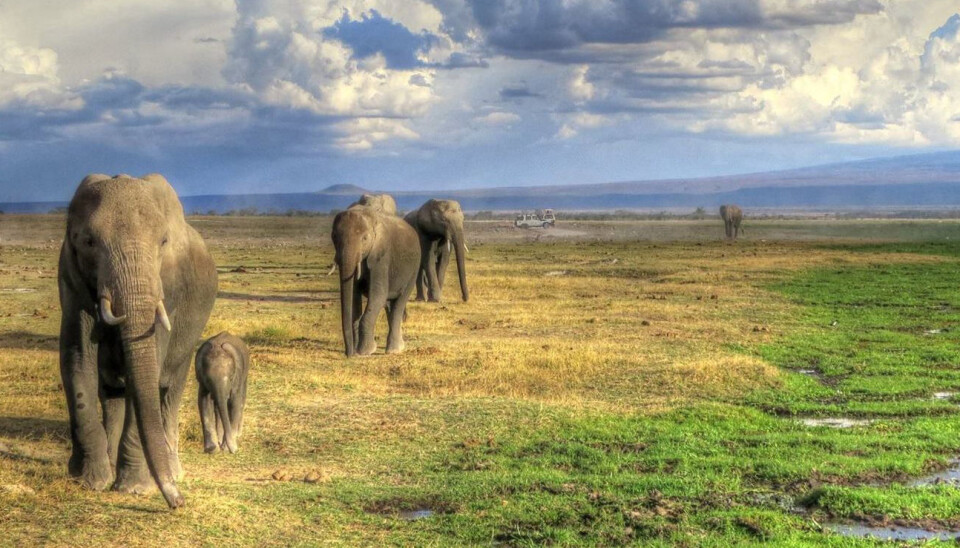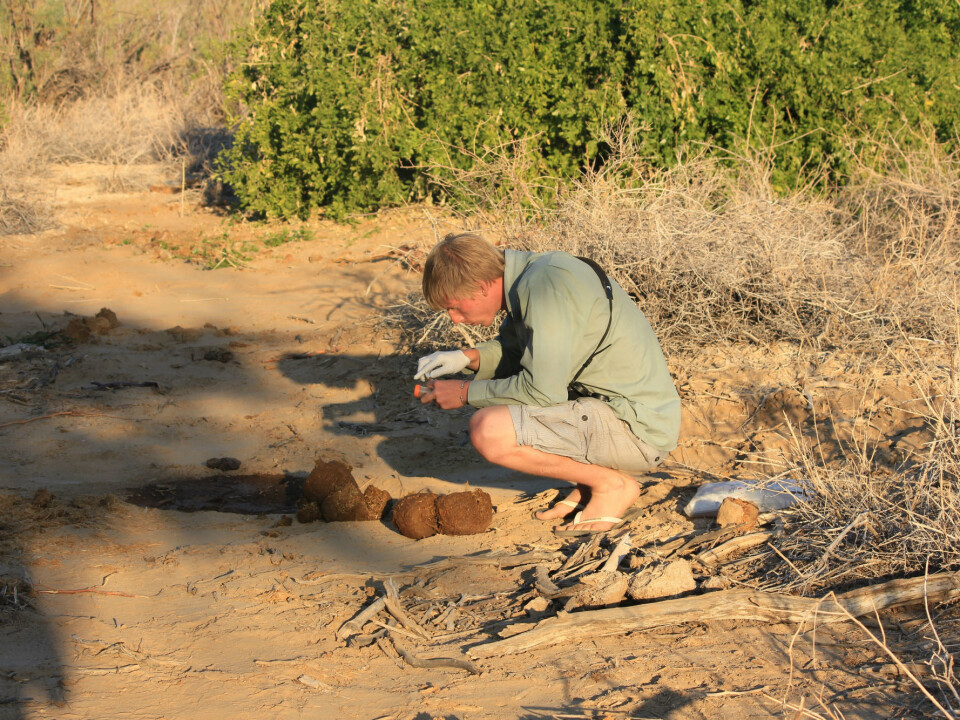This article was produced and financed by NINA - Norwegian Institute for Nature Research

Elephants outside the national park are more stressed
The stress levels in elephants living in the areas outside Etosha National Park is higher than in elephants living inside the park.
This is revealed in a study where researchers from the Norwegian Institute for Nature Research (NINA) and the Norwegian University of Science and Technology (NTNU) measured the levels of stress hormones in elephant dung.
Etosha National Park in Namibia is home to a population of approximately 3000 African elephants. The park is strictly regulated and completely fenced, and the presence of several water holes ensures that the elephants have access to water all year round. As one of the most popular nature reserves in Southern Africa, the park attracts visitors from all over the world.
Effects of human-induced disturbances
The human communities around the park, in the Kunene region, are growing in line with the increased economic prosperity resulting from tourism to the park. This increases the occurrence of human-induced disturbances in the area, and greatly affects the elephant herds living naturally outside the park.
"Elephants will typically try to avoid encountering humans, for example by only visiting water sources after sunset and by staying away from roads in the daytime," says Craig Jackson, researcher at NINA.

"Nevertheless, elephants will be attracted to man-made water sources and agricultural crops, especially during the dry season. This increases the probability of stressful confrontations between elephants and humans."
Researchers from NINA and NTNU, in collaboration with the Namibian Ministry of Environment and Tourism, have investigated the stress levels of elephants inside Ethosa National Park and of elephants living in the areas surrounding the park.
Hormones in dung as a stress indicator
Stress leads to increased levels of the stress hormone glucocorticoid in the bloodstream. Levels of stress in wild animals have typically been measured by drawing blood samples. However, this method is problematic when studying larger animals, and endangered species in particular, as they need to be immobilized before sampling. Both the administration of tranquilizers and the subsequent handling can be stressful to the animal and may influence the test results.
However, products of the metabolized stress hormone, so-called metabolites, are excreted into the intestines. Thus, stress levels can be measured by collecting dung samples.
"The method we have used is noninvasive and better with regard to the well-being of the elephants," says Roel May, senior researcher at NINA.
"In addition, it gives us a more accurate measure of the long-term stress levels, meaning that it is a far better indicator of chronic stress."
As it turns out the consentration of metabolites were one and a half times higher in elephants living in the Kunene region than in elephants living inside Etosha National Park. In other words, elephants living outside the park are clearly more stressed than elephants living in the park itself.
"This is connected to the extent of human-induced disturbances outside Etosha National Park," Jackson adds.
"In addition, we see both smaller herd sizes and fewer calves per female in the Kunene region than inside the park. However, further studies are needed to determine if it is the stress level that is having a negative impact on fertility and herd size."
Reference:
Hunninck, L., Ringstad I. H., Jackson, C. R., May, R., Fossøy, F., Uiseb, K., Killian, W., and Røskaft, E. 2017. Being stressed outside the park – conservation of African elephants (Loxodonta Africana) in Namibia. Conservation Physiology 5: 1-11.






























